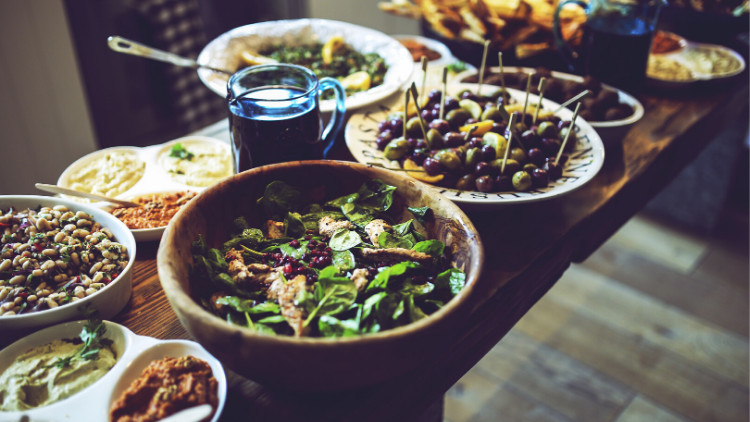
There are many new challenges we face in recent times as we reacclimatise to the huge changes in our lives. Since the vast majority of office work is now based at home – it can be a significant adjustment for many workers to have to prepare their own food. It may seem a ridiculous notion to the kitchen whizzes out there, but this can be especially difficult for those who’ve had the luxury of meals being provided in the workplace, or had lots of restaurants and cafes to choose from – and for some it may even be the first time they’ve ever had to cook for themselves.
So, if you happen to find that meal planning is becoming a source of pressure lately, or that you’re just eating the same convenient foods on repeat – you may find the following process useful to make the task at hand much easier, healthier and more cost-effective.

#1 Brainstorm Favourite Foods
Start by jotting down some of your preferred breakfast, lunch and dinner options. By brainstorming foods that you enjoy eating – you might recall some dishes that you haven’t eaten in a while or may have entirely forgotten about! A great starting point is to begin adding more variety to your current choices, as well as a reminder that enjoying food is an important dimension of nourishment and should always be factored into the meal prep equation. Remember to include a variety of snacks in the brainstorm – and don’t exclude any options based on whether you think they’re available anymore. For example – you might love banana bread from your local café, but it would knock your socks off when you realise how quick and easy it is to bake a delicious banana bread.
#2 Think Big
Now review some of the meals you’ve included on the list and ask yourself which options you could batch cook and keep in the fridge throughout the week – such as soups, curries, lasagne, powerballs, tray bakes, banana bread etc…
See if you can identify at least two meals or snacks you could easily prepare on a Sunday. For example, a batch of 10-12 powerballs will take 15 minutes to make and will keep in the fridge for the entire week and serve as both a quick breakfast or healthy snack option. Equally a curry with rice may be a perfect dinner option, but equally a delicious sandwich filler. Batch cooking doesn’t have to mean you’re stuck eating the same thing all week – you can be creative and mix it up!

#3 Think Healthy
Now review your options one last time and consider simple ways you could make these meals healthier. Recently we are so much more aware of the importance of good nutrition in maintaining our health and strengthening our immune system – so how can you add more nutrient rich foods to these meals?
A general guide is to ‘eat a rainbow’ – adding more colourful fruit and vegetables to each meal. For example – adding berries and seeds to porridge, boosting a green smoothie with spirulina and goji berries, adding extra garlic, broccoli and spinach to a curry, drinking herbal teas, etc.
#4 Create Your Meal Map
Once you’ve completed your initial brainstorm (5-10mins max) – you could try drawing up a rough draft of your main meals and snacks for the working week in timetable format. Pencil in your plan for the week ahead bearing in mind the dishes you decided to batch cook.
You may feel some resistance at this point and maybe even doubt the effort required to do this – but like every new skill, the more we practice this, the easier it will become and the time invested at this stage will end up saving so much more time and money in the long run!

#5 Make Your Shopping List
Finally, when you have your meal map planned out – jot down the main ingredients and create your shopping list. Over the last couple of weeks, the demand for online shopping has soared, so you have to allow for some delays if you choose to get your shopping delivered. By planning your meals in this way, your delivery request can be logged well in advance, ensuring your food arrives in plenty of time. To add to the convenience, your shopping list can be saved on your account so that each week going forward you have a base list to work from – making it a much quicker process.
Conclusion
So as already mentioned, this all may seem alien when we’re so used to an endless supply of food on demand – but with a little simple strategic tweaking, you’ll be able to find a new groove in no time and maybe begin to unearth some dormant culinary skills – and even have some fun in the kitchen!

